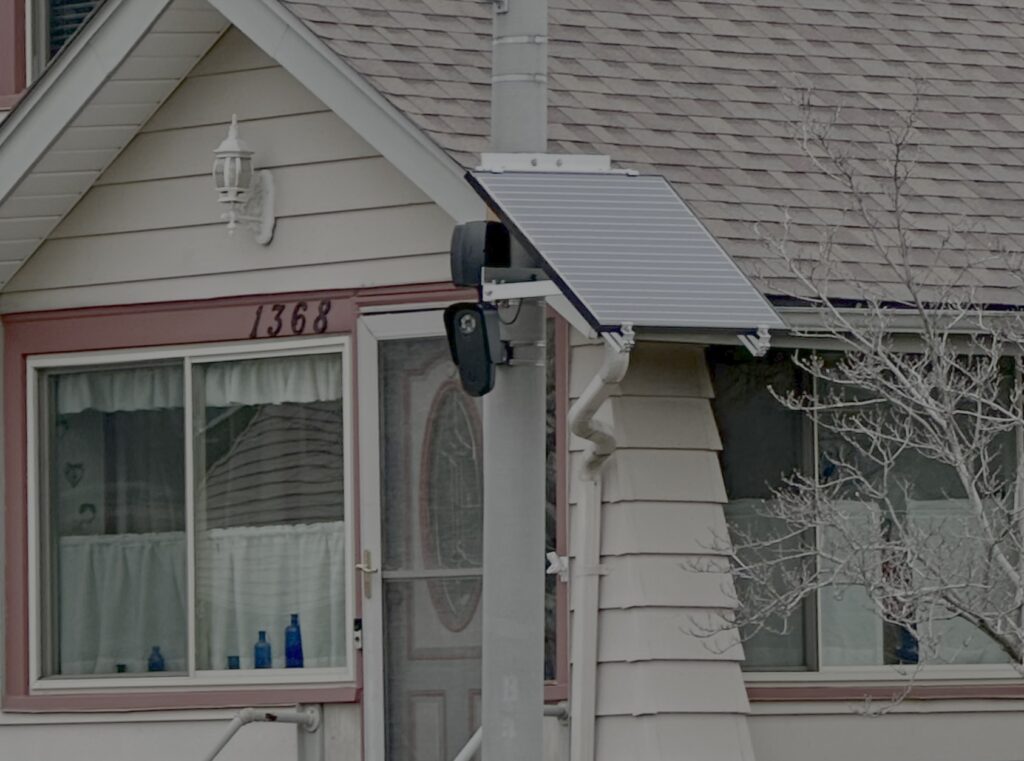California’s constitution opens with a broad, likely familiar, proclamation added on Nov. 5, 1974.
“All people are by nature free and independent and have inalienable rights. Among these are enjoying and defending life and liberty, acquiring, possessing, and protecting property, and pursuing and obtaining safety, happiness, and privacy.”
The prescience of this section is hard to overstate, especially as those inalienable rights have been attacked. Specifically, the right to privacy has progressively eroded in San Francisco thanks to partnerships between the police and private companies.

In 2019, San Francisco banned the use of facial recognition technology and nearly two dozen other municipalities followed suit shortly after. The hallmark vote in the city did little to stop the police from heavily surveilling protestors the following summer, as SFPD used a network of private security cameras to monitor Black Lives Matter protestors in late May and early June.
This is just one example of the public-private surveillance partnerships at work in the city. These partnerships obfuscate misuse at the expense of the public.
Another example of this predatory partnership is Flock Safety’s extensive network of surveillance cameras, storing the public’s information on private servers and sharing it with a variety of federal agencies.
Similarly, SFPD’s Real Time Investigation Center, which recently moved to a new location downtown thanks to a $9.4 million donation from crypto billionaire Chris Larsen, represents the logistical hub of the network.
Far from making us safer, these partnerships have demonstrably destructive effects on our civil liberties and put the most vulnerable members of our community in the crosshairs. In July, 2024 the ACLU NorCal authored a 50-page study entitled Seeing Through Surveillance that detailed the severe costs of unchecked surveillance technologies.
Part of the report outlined a 2019 lawsuit from the ACLU NorCal that revealed over 80 local law enforcement agencies in 12 states, including California, fed more than 1 billion license plate reader records to Immigration and Customs Enforcement. This pattern has only intensified with the interjection of private enterprise.
Beyond just the legislative and civil consequences, these technologies are often supported by our tax money.
The ACLU report details several local case studies that highlight the ineffectiveness, and costliness, of surveillance technology.
Between 2006-2011, the city of Oakland spent $2 million on technology that was barely used. Similarly, in 2005 San Francisco installed a series of cameras, owned by the city, in high traffic areas as a way of curbing crime. However, a UC institute analysis in 2008 revealed that the cameras “had no impact on violent crime” and were not a useful tool for investigators or prosecutors.
Despite this, surveillance technology has been widely implemented across the Bay Area. The key distinction now, as opposed to the developments twenty years ago, is the addition of private companies like Flock Safety.
In March, 2024 then-Mayor London Breed announced the city was installing 400 Flock Safety Falcon license plate reader cameras. That month the city also initiated the Real Time Investigation Center at its original location, the Hall of Justice. Critically, the RTIC is equipped with Flock’s ALPR data.
Both came shortly after the passage of Prop E in the March 5 election, which expanded police surveillance tactics and was financially supported, at least in part, by Chris Larsen.
Flock Safety was founded in 2017 by Garrett Langley, a Georgia Tech grad with a background in engineering. It quickly became a disruptor in the surveillance space, honing in on a market primarily dominated by Motorola cameras. By and large, Flock Safety has won contracts with large municipalities through partnerships with city governments and through smaller, local associations.
The cameras are “almost always [paid for using public funds],” Dave Maass, director of investigations for the Electronic Frontier Foundation, said in an interview. “Sometimes it’ll come through an outside grant that will become public funds. It can get a bit hinky in San Francisco with Chris Larsen, is it public funds is it not public funds. But Flock did make a lot of headway by coming in through homeowners’ associations.”
In February, 2024 Flock Safety published a study claiming that its ALPR cameras are “instrumental in solving 10 percent of reported crime in the U.S.”
That kind of eye-catching claim invariably bolsters the company’s bottom line and opens the door to more contracts with homeowners’ associations or cities.
But the study was written by Flock employees with “oversight” by two academic researchers. One of the researchers spoke to 404Media, and noted that he would have approached the study quite differently and explained that the police data was “too varied and incomplete for us to do any type of meaningful statistical analysis on them.”
This kind of marketing tactic is not uncommon in private enterprise, but those strategies being used for issues like law enforcement and surveillance have more destructive consequences.
“Flock is in it for the business,” Maass said. They’re responsible to their investors first, their customers second and then down in the stack is the responsibility to the public.”
Reporting by 404Media in recent months has detailed the extensive surveillance network put in place by Flock Safety that has been tapped by federal law enforcement agencies. Jason Koebler of 404Media wrote in June about an email thread called, “Southern Oregon Analyst Group,” in which local officers shared surveillance tactics and information with federal agents, including those in ICE’s Homeland Security Investigations.
This pattern of information sharing with federal agencies is well established, as Matt Cagle, a Technology and Civil Liberties Attorney with ACLU NorCal noted.
“As we’ve seen in San Francisco this is the kind of information that rarely stays local. This information about our locations and our movements,” Cagle said, referring to a recent SF Standard article that revealed SFPD allowed officers from Georgia and Texas to run 1.6 million illegal searches, including 19 explicitly for ICE.
In August, Koebler of 404Media reported that Customs and Border Patrol had routinely searched Flock Safety’s more than 80,000 ALPR cameras without the knowledge of the local police departments that operate them.
This relationship illuminates the issue with this kind of widespread surveillance.
“If a federal agency tried to get San Francisco’s data from Flock directly, what would happen? Would Flock hold off a bit and give SF a chance to challenge it?” Maass said.
While Flock Safety’s expansive array of cameras serve as the tendrils of the city’s surveillance network, all that data is collected, stored and analyzed in the RTIC, which serves as the brain of the network.
In June, Mayor Daniel Lurie announced a new headquarters for the RTIC at 315 Montgomery Street. The location is part of a bigger building complex that includes 555 California Street and is owned, at least in part, by The Trump Organization.
Of the $9.4 million donation from Chris Larsen through the Police Community Foundation, $2 million will go to paying the lease for the 14,000 square foot office space. Ripple Labs, Larsen’s crypto firm, was the former occupant and, by all accounts, will maintain the lease for the SFPD during its 16-month duration there.
The remainder of the donation, $7.4 million, will go to an expansion of the Drones as First Responders program. The donation will add 10 new launch sites for the drones and allow FAA trained officers to pilot the drones from the RTIC.
Both the RTIC as a whole and the deployment of Flock Safety cameras were made legally possible by the passage of Prop E. Once the proposition passed, Larsen then offered another substantial sum of money to move the RTIC into a building in which his company holds the lease.
“I think the example of Prop E being supported by Chris Larsen and how it led up to the RTIC is really important,” Jeremy Mack, executive director of the Phoenix Project, said in an interview “So he throws all this money to this PAC to support Prop E. Then Prop E passes and he turns around and gets on Lurie’s good side, then he starts this foundation. The SF police community foundation, just so he can give the $9.4 mill to the SFPD”
This municipal relationship between billionaire money and city services is not new, especially in San Francisco.
“These kinds of issues are part of a well-worn pattern that really came to be in the Bay Area and Silicon Valley. You have Silicon Valley companies who were trailblazers in this respect, they collect reams of information about their users and then the government can tap into those databases using subpoenas and warrants and other demands,” Cagle said.
But such an opaque and expensive relationship comes with massive problems.
Namely, private companies are unaccountable to anyone but their shareholders. Even non-profits are shrouded by the cover of private enterprise and thus are not subject to the same scrutiny.
While city bureaucracies have myriad failings, they are—at least to some extent—accountable to the public. When it comes to issues of surveillance and policing, issues that often manifest violently and prejudicially on the poorest people in the city, public accountability is critical.
Privacy as a constitutional, inalienable right gives us as citizens the right to demand transparency from our municipalities. These ever-expanding public-private partnerships work directly against that right. More than that, privacy itself is not about shying away from the public light but rather safeguarding ourselves and our community against corporate overreach.
“Privacy is not about having something to hide. Privacy is about having something to protect,” Cagle said.





